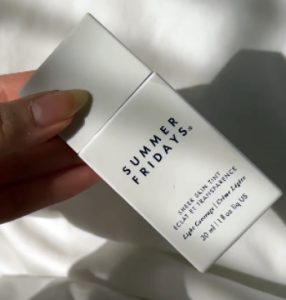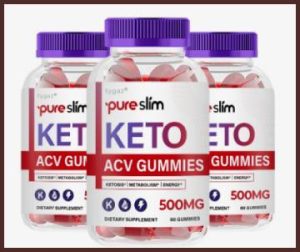Dry, cracked lips are a total buzzkill, but Aquaphor Lip Repair Ointment has saved mine time and again.
This dermatologist-recommended gem hydrates and heals like nothing else, all for ~$5 a tube.
You should grab Aquaphor Lip Repair if you want soft, healthy lips without the hefty price tag.
My review shares my journey, pros, cons, and tips to make your lips feel amazing.
From winter woes to daily care, this balm’s got you covered—trust me, you’ll love it!
My Experience with Aquaphor Lip Repair
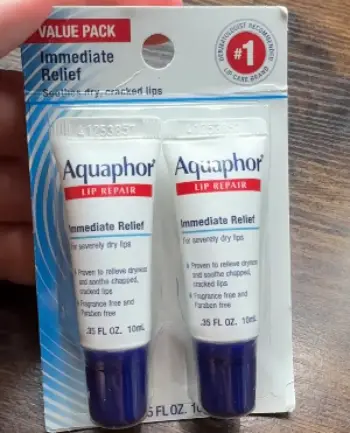
Living in a windy, cold city, my lips were constantly chapped—flaky, sore, and sometimes cracked enough to sting.
I’d cycled through countless balms, but most left my lips drier after a few hours.
Then I snagged a 0.35 oz tube of Aquaphor Lip Repair Ointment, drawn by its dermatologist-backed rep.
The first time I applied a tiny dab, the fragrance-free formula felt rich yet smooth, coating my lips without that heavy, greasy vibe.
It was like a cozy blanket for my lips, instantly soothing the tightness.
By the next morning, my lips were noticeably softer—no flakes, no pain.
For the first week, I used it morning and night, and by day four, my cracks were gone, leaving my lips smooth and hydrated.
Unlike stick balms that fade fast, Aquaphor lasted through meals, coffee, and even windy walks.
Now, I mostly apply it at night, and my lips stay moisturized all day.
The squeeze tube is super convenient, though I learned to use just a smidge to avoid stickiness.
You’ll be amazed at how quickly it transforms your lips, but it’s not flawless—more on that soon.
About Aquaphor Lip Repair
Aquaphor, from Beiersdorf, is the #1 dermatologist-recommended lip care brand, known for tackling dry, cracked skin.
Aquaphor Lip Repair Ointment is a fragrance- and paraben-free balm crafted for sensitive lips.
Its formula blends shea butter, chamomile essence, and vitamins C, E, and provitamin B5 to hydrate and repair.
At ~$5 for 0.35 oz, it’s a budget-friendly fix for chapped lips, clinically proven to soothe and prevent dryness.
Apply liberally as needed, and its occlusive base locks in moisture for hours.
You’ll love its simple, effective approach to lip care.
Pros and Cons of Aquaphor Lip Repair
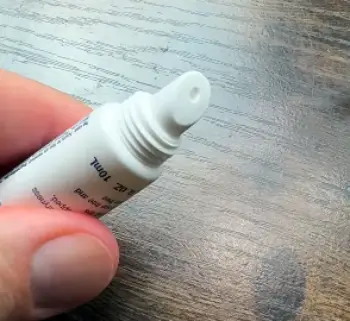
Pros:
- Intense hydration: Keeps lips moisturized for hours, even in brutal weather.
- Dermatologist-approved: Backed by experts for sensitive, chapped lips.
- Fragrance-free: No scents to irritate, perfect for sensitive skin.
- Paraben-free: Clean formula minimizes reaction risks.
- Wallet-friendly: ~$5 for 0.35 oz is a steal for the results.
- Fast healing: My cracked lips were smooth in days, no peeling.
- Multi-use: Great for cuticles or dry patches in a pinch.
- Non-greasy: Glossy at first but absorbs to a comfortable finish.
- Portable tube: Fits easily in pockets or bags for on-the-go use.
- Nourishing blend: Shea butter and vitamins repair and soothe.
Cons:
- Thick formula: Feels sticky if you apply too much, so go light.
- No SPF: Lacks sun protection, not ideal for sunny outdoor days.
- Squeeze tube woes: Hard to get the last bit without cutting it open.
- Tasteless: Neutral flavor might bore fans of flavored balms.
- Not cruelty-free: Lanolin and beeswax may turn off ethical buyers.
- Slow to absorb: Takes a few minutes to sink in fully.
- Not vegan: Beeswax and lanolin aren’t suitable for vegan users.
- Rare irritation: Lanolin may cause reactions in sensitive folks.
- Small size: 0.35 oz tube runs out fast with heavy use.
- Needs reapplication: Extreme dryness calls for multiple daily uses.
Maintenance Tips for Aquaphor Lip Repair
- Use a Small Amount: Squeeze out a pea-sized dab to avoid stickiness. I spread it thinly for a comfortable, non-heavy feel.
- Apply at Bedtime: Slather on before sleep for overnight repair. My lips wake up soft and flake-free after nightly use.
- Clean Lips First: Wipe lips with a damp cloth before applying. I remove food or old balm to help it absorb better.
- Pair with Daytime Balm: Use a lighter balm during the day for maintenance. I switch to a thinner formula and save Aquaphor for night.
- Store Cool: Keep below 77°F to preserve texture. I stash mine in a drawer to avoid melting in heat.
- Test for Allergies: Patch-test on your wrist if your skin’s sensitive. I had no reactions, but it’s a smart first step.
- Reapply Smartly: Use every 4-6 hours in dry or windy conditions. I reapply after eating or outdoor exposure.
- Exfoliate Weekly: Gently scrub lips with a sugar scrub before applying. I exfoliate weekly to boost Aquaphor’s healing power.
- Cut Tube Open: Slice the tube when it seems empty. I got an extra week’s worth by cutting mine open.
- Avoid Licking: Licking lips strips the balm and worsens dryness. I sip water to keep my lips hydrated naturally.
Comparing Aquaphor Lip Repair to Other Brands
- Aquaphor Vs. Vaseline Lip Therapy
I’ve used Vaseline Lip Therapy (~$2 for 0.25 oz) for ages, drawn by its low price.
Its petroleum jelly base creates a solid barrier, but it lacks Aquaphor’s nourishing shea butter and vitamins.
Vaseline felt slicker and needed more frequent reapplication, especially in winter.
Aquaphor healed my cracks faster, and its squeeze tube was easier to use than Vaseline’s tub.
Vaseline’s simpler formula is less targeted for repair.
You’ll choose Vaseline for a cheap barrier, Aquaphor for quicker healing and comfort.
- Aquaphor Vs. Burt’s Bees Beeswax Lip Balm
Burt’s Bees Beeswax Lip Balm (~$4 for 0.15 oz) has a cooling minty feel I liked, but its hydration faded faster than Aquaphor’s.
The beeswax base felt waxy, not creamy, and my lips got dry again after a few hours.
Aquaphor’s fragrance-free formula was gentler, and its vitamins worked wonders on cracks.
Burt’s Bees is cruelty-free, unlike Aquaphor, but less effective for severe dryness.
You’ll pick Burt’s Bees for a refreshing tingle, Aquaphor for deep, lasting moisture.
- Aquaphor Vs. Laneige Lip Sleeping Mask
Laneige Lip Sleeping Mask (~$24 for 0.7 oz) was a luxe treat I tried for nighttime care.
Its shea and murumuru butters hydrate well, but the sticky texture and sweet scent felt heavy for daily use.
Aquaphor matched its hydration for a fraction of the cost, and its tube was more portable than Laneige’s jar.
Laneige’s indulgent feel is fun, but Aquaphor’s no-frills formula was more practical.
You’ll go for Laneige for a pampering vibe, Aquaphor for affordability.
- Aquaphor Vs. Lanolips 101 Ointment
Lanolips 101 Ointment (~$17 for 0.3 oz) is a premium lanolin-based balm I tested.
It’s ultra-hydrating but stickier than Aquaphor, making daytime use less comfy.
Aquaphor’s added chamomile and vitamins healed my lips faster, and its $5 price tag is hard to beat.
Lanolips works on cuticles too, but its cost feels steep.
You’ll choose Lanolips for multipurpose luxury, Aquaphor for budget-friendly lip repair.
Also Read: Comparison of Aquaphor Vs. A&D Ointment
Ingredients Breakdown
Aquaphor Lip Repair’s formula is a lifesaver for chapped lips.
Octyldodecanol and glycerin pull in moisture, while shea butter and beeswax lock it in with a protective seal.
Vitamins C, E, and provitamin B5 nourish and repair, and chamomile essence with bisabolol calms irritation.
Unlike Aquaphor’s Healing Ointment, which uses petrolatum, Lip Repair swaps in castor seed oil for a smoother, less greasy feel.
I found it gentle on my sensitive lips, though lanolin could bother some.
You’ll love the effective, clean blend, but always check for allergies.
Cost Vs. Value Analysis
Aquaphor Lip Repair costs ~$5 for 0.35 oz (~$14.29/oz), a bargain compared to Laneige (~$34.29/oz) or Lanolips (~$56.67/oz).
Vaseline (~$8/oz) and Burt’s Bees (~$26.67/oz) are cheaper per ounce but don’t match Aquaphor’s healing power.
The tiny tube lasts weeks since a small dab goes far, and its long-lasting hydration cuts down on reapplication.
I found it outperformed pricier balms for severe dryness.
With dermatologist approval and a nourishing formula, it’s a steal.
You’ll get amazing value for daily lip care.
Who Should Use Aquaphor Lip Repair?
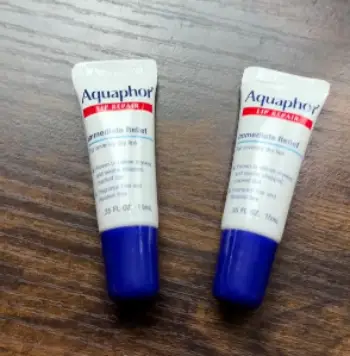
Aquaphor Lip Repair is a must for anyone with dry, cracked lips, especially in harsh weather.
Its fragrance- and paraben-free formula is ideal for sensitive skin.
I rely on it for overnight repair, but it’s great for daytime if you don’t mind the gloss.
It’s not for those needing SPF or vegan products due to beeswax and lanolin.
If you want fast, affordable relief that actually works, you’ll want Aquaphor in your pocket.
Addressing Negative Feedback
Some folks find Aquaphor too thick or sticky, which I noticed when I used too much.
Applying a thin layer fixes this.
Others dislike the neutral taste if licked, but I found it fine compared to flavored balms.
Rarely, lanolin causes irritation, so I’d patch-test if you’re sensitive.
Some say it doesn’t last long, but I got hours of hydration with proper use.
You’ll sidestep issues by using sparingly and checking ingredients first.
My Routine with Aquaphor Lip Repair
Aquaphor’s a staple in my daily grind.
Mornings, I dab on a thin layer after brushing my teeth, letting it soak in while I get ready.
At night, I apply a bit more after a gentle lip scrub for deep repair.
In winter, I reapply after meals or windy walks to keep dryness at bay.
I keep a tube in my bag for emergencies—like dry lips on long flights.
Weekly exfoliation with a sugar scrub amps up its effects.
You’ll find it easy to weave into your routine for soft lips.
Why Aquaphor Stands Out
Aquaphor Lip Repair doesn’t scream luxury, but it delivers results.
Its thick, nourishing formula heals cracks faster than any balm I’ve tried, and the $5 price is unbeatable.
Unlike Vaseline’s basic protection, Aquaphor’s vitamins and shea butter actively repair.
It’s more practical than Laneige’s sticky mask and less greasy than Lanolips.
The dermatologist backing and clean ingredients give me peace of mind.
You’ll love its reliability, though it’s not vegan or SPF-equipped.
Also Read: My Thoughts On Aquaphor Healing Ointment
Frequently Asked Questions (FAQs)
Yes, it’s fantastic for dry, chapped lips, healing cracks fast with shea butter and vitamins. My lips were smooth in days, and it’s great for sensitive skin.
Rarely, lanolin or beeswax may irritate sensitive skin, causing redness. I had no issues, but patch-test if you’re allergy-prone.
Yes, it’s the #1 dermatologist-recommended lip care brand for its soothing, hydrating formula. Experts love its repair power.
Aquaphor heals faster with nourishing ingredients, while Vaseline’s a basic barrier. I prefer Aquaphor for quick results, but Vaseline’s cheaper.
Final Thoughts
Aquaphor Lip Repair Ointment turned my dry, cracked lips into soft, happy ones.
Its nourishing formula and wallet-friendly price make it a no-brainer for chapped lips.
You should buy Aquaphor Lip Repair for its lasting hydration and dermatologist-trusted power.
My review covers my experience, pros, cons, and tips to help you get the most out of it.
Grab a tube, use it wisely, and enjoy smooth, healthy lips all year long!


